In the Czech Republic, Middle Eastern and Central Asian cuisine are still shrouded in exoticism. Various eateries that boast an authenitc dining experience have cropped up since the Velvet Revolution – and just as many have closed their doors. As a Lebanese expat living in Prague, I was anxious to explore places that would offer me a journey back. Do Prague’s Middle Eastern restaurants hit the mark?
The Valentine’s Day advert looked promising. Customers could choose between a Lebanese or Persian dinner-for-two, at a price of 570 CZK per deal. There would be belly dancing. The place was easy to find, on a street off Kozí. There was nothing particularly Middle Eastern about the front room, except green lanterns from the ceiling. The bar was ludicrously decorated with balloons.
The owner led us to the main area where lay every conceivable touristy Middle Eastern trinket imaginable – a plastic water fountain in a corner, brass pots on hot coals, a stray lantern in every other nook. A space had been cleared in the center for the dancers, which meant everyone sat against the walls in a huge tent. On the upside, the tents were sewn out of Bedouin fabric, which Syrian merchants sold in the Beirut of my youth.
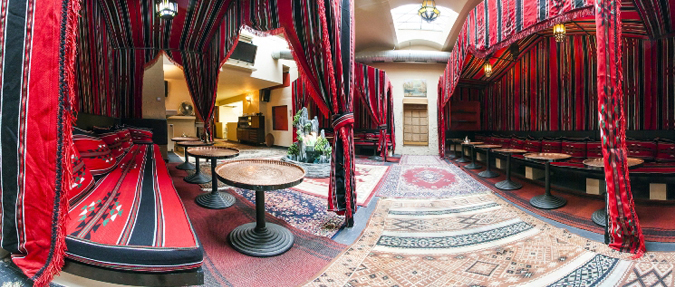
The trick of Mediterranean cuisine lies in the salt, pepper, and cumin. We had the Lebanese option, which was unseasoned. The hummus was bland and unoiled – the tabbouleh needed more salt and lemon. The baba ghannouj, an eggplant dish, was perfectly baked and seasoned. That was the only thing that went right. The Lebanese couple next to us sent back a dish of fattoush, a salad with crispy bread and radishes, with a dismissive “this is not fattoush”. A honey cake finished off the business, which was superb.
The dancing left much to be desired. Like everything that evening, it needed Oriental spice. The arrangement of the room was such that waiters zig-zagged around the girls continually. We couldn’t pay by card because they had no machine; I stayed as ransom while my boyfriend journeyed to the nearest ATM ten minutes away.
All in all, not the best way to spend Valentine’s Day.
Towards the end of Wenceslas Square, you’ll see an energetic and convincing waiter with a menu pushing people to try this Lebanese place.
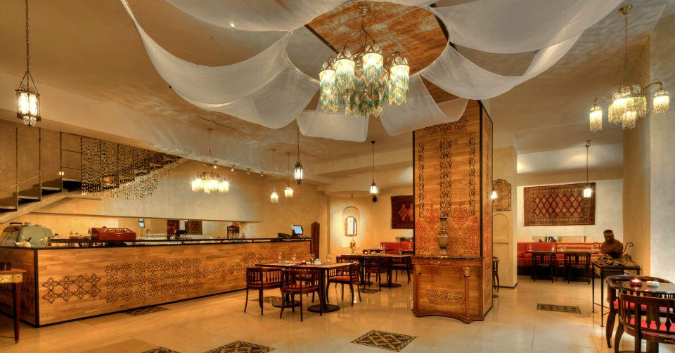
The cafe is tastefully decorated with subdued, passionate shades of red and pastel orange. There’s a downstairs and upstairs – I sat up, in a tent-like booth. The atmosphere was intimate yet roomy. Someone knew exactly what to place in a stray corner or on a bare wall, like the beautiful wooden oud next to me or a watercolor of the old port at Byblos, Lebanon, a Phoenician relic. I can’t say the same for the tasteless Arabic pop music. (Though I didn’t mind so much, considering it’s the same in Lebanon.) The thick white tablecloths and napkins were a very nice touch.
The waiters were Algerian, Egyptian, and Syrian, a little pot of the Arab world; pulled-together, polite, yet very friendly. My wonderful blackcurrant drink (49 CZK) was brought promptly, followed by a selection of mezze: hummus, baba ghannouj, grape leaves, and the ever-important tabbouleh (140 CZK).
The food was rather bland (as Czech food is plain and relatively unspiced, foreign restaurants seem to cater to the existing taste). The same problem with Sultán cropped up: not enough salt, pepper, oil. My main course, a falafel sandwich (150 CZK), was made with a thicker variant of pita than normal, but the falafel themselves were fine. Considering that falafel is a working-class meal, though, the food prices weren’t so humble.
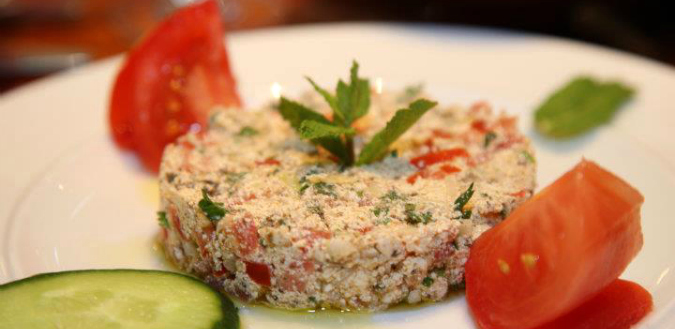
I would definitely recommend El Emir for a glass of Lebanese red wine the usual varieties are Ksara (129 CZK) or Kefraya (86 CZK), from vineyards in the Bekaa Valley. Any other place would serve the usual Muller-Thurgau or Cabernet Sauvignon. This is really a treat.
Overall, a good dining experience, though not memorable.
Conference Producer

Easy manual work with electronics - start 8th Jan

REMOTE (EEA) Software Engineer – IntelliJ&n...

I went here for late lunch, on a beautiful sunny day. What struck me immediately was the quality of light inside this restaurant – wide windows let in every ray of sunshine from across the river. The hookahs were perfectly illuminated.
All around me were couples, foreign and Czech. In tune with the atmosphere, PDA was rampant. The (Czech) waitresses were very upbeat, bright, and unobtrusive. I can’t help thinking they could have used another pair of hands on staff.
The menu was special. It was designed like a travel guide, with pictures from Syria, India, Pakistan, Indonesia, and Iran. Indeed, the pictures on the walls were from various ends of the globe. The cuisine is Lebanese and Indo-European.
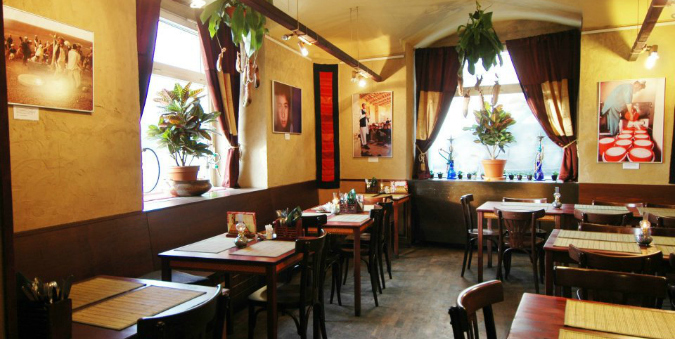
I had an amazing meal. The lentil soup (35 CZK) shocked me: it was so Lebanese it could have been made by an aunt. At the same time, its creamy texture, in the French velouté style, made me wonder if the chef could be Lebanese, trained in France. The mezze was superb. The hummus had just the right amount of tahina and the baba ghannouj (149 CZK for both) had the characteristic moisture and burnt eggplant taste. As for the falafel (69 CZK), they were home-made and possibly the best I’ve had. The batata harra (79 CZK), a spicy potato dish, was well-seasoned with slices of baked bell pepper jazzing up the color and evening out the flavors with their sweetness.
Dessert was baklava (49 CZK), which made me think of the sweetshop in Beirut where I bought trays of it for friends on holidays. Simply wonderful.
My only complaint is that I didn’t get enough bread, which is counter to Eastern generosity. Otherwise, I would recommend Klub Cestovatelů as atmospheric, romantic, and down-to-earth. They have bellydancing on Thursdays at eight, which is a plus.
I loved this place.
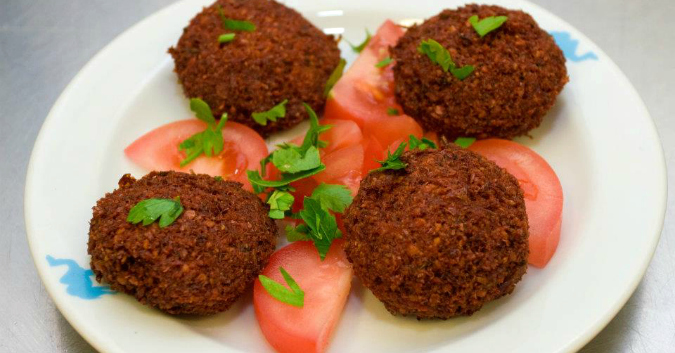
A friend who has lived in Jaffa recommended Andalous for its vibe, a typical cafe that could be in Jaffa, Beirut, or Cairo, filled to the brim with people, buzzing with life well into the night, with football or Melody (the Arab equivalent of MTV) on.
Andalous was exactly as she said. I was overjoyed to see little tables crowded with brunettes talking in Arabic, English, and Czech. All the waiters were Arab, which was great for me as I love speaking the language.
My table was window-side, and I was delighted with the traditional pots in the window seat. A polite and friendly waiter took my order of iced mocha (89 CZK) and chocolate cake (65 CZK). The cafe does desserts, hot drinks, smoothies, and hookah. Some light sandwiches would be a good idea, but otherwise, my taste buds were very happy. Of all the places I went to, this is the most authentic. The customers are mostly regulars, Arab expats.
A community from home is more often than not a good thing.
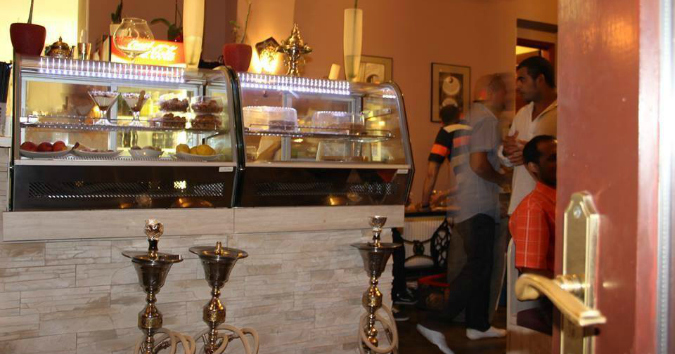
The decor was soothing. I could imagine an afternoon of reading in this museum of Afghani culture. The Persian rugs on the walls and floor were authentic and tasteful. I liked the vintage Afghani shoes behind me. The booths were laid out with Bedouin cushions, and the tablecloths were thick and white. The music was traditional and poetic.
The food took a while to prepare, but when it arrived, it was excellent. Dal (50 CZK) is a red lentil dish seasoned with garlic, ginger, and olive oil. Its texture, granular yet smooth, was enjoyable, especially with Nan-e Afghani (40 CZK). The national bread of Afghanistan, it was offered in large quantity with the meal, a sign of hospitality.
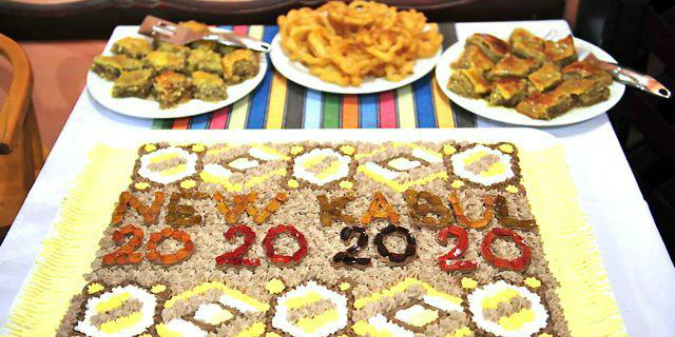
The Afghani salad (120 CZK) was well-seasoned, a fresh mixture of coriander, mint, cucumber, bell pepper, and tomato. Next was a dish of roast potatoes in tomato sauce (80 CZK). These were presented on a black pan and coated with herbs, the seasoning made up for their dryness.
Finally, I had some Bolani (150 CZK), what my boyfriend calls a “champ sandwich”. This is a pocket of saj bread filled with potato and leek, topped with olive oil. Its crispiness reminded me of thin-crust Italian pizza.
Really great comfort food.
**
Where do you get your fill of falafel and hummus in Prague?
Related articles












 Reading time: 6 minutes
Reading time: 6 minutes 



 Finnish
Finnish
 Polish
Polish





















